
The Enchanting Vértes Mountains: A Hidden Gem in Hungary
Discover the untouched beauty and rich history of Hungary's Vértes Mountains, a perfect retreat for nature lovers, history buffs, and those seeking tranquility.
Nestled in the heart of Hungary, the Vértes Mountains offer a serene escape for nature lovers and adventure seekers alike. This lesser-known destination is perfect for those looking to explore lush forests, rolling hills, and ancient ruins without the crowds found in more popular tourist spots. The Vértes Mountains are rich in history and culture. Medieval castles, such as the one in Csókakő, dot the landscape and provide a glimpse into Hungary's storied past. The region is also home to quaint villages where time seems to stand still, allowing visitors to experience traditional Hungarian life. Outdoor enthusiasts will find plenty to do in the Vértes Mountains. Hiking and biking trails crisscross the terrain, offering stunning views and a chance to spot local wildlife. For a more leisurely experience, visitors can enjoy picnicking in the many scenic spots or take a guided nature walk to learn about the area's unique flora and fauna.
Local tips in Vértes Mountains
- Visit in the spring or fall for the best weather and fewer crowds.
- Pack comfortable hiking shoes, as many trails can be rocky and uneven.
- Try local Hungarian dishes in the small village restaurants for an authentic culinary experience.
- Carry a map or GPS, as some trails may not be well-marked.
- Check out the local festivals during your visit for a taste of regional culture and traditions.
The Enchanting Vértes Mountains: A Hidden Gem in Hungary
Nestled in the heart of Hungary, the Vértes Mountains offer a serene escape for nature lovers and adventure seekers alike. This lesser-known destination is perfect for those looking to explore lush forests, rolling hills, and ancient ruins without the crowds found in more popular tourist spots. The Vértes Mountains are rich in history and culture. Medieval castles, such as the one in Csókakő, dot the landscape and provide a glimpse into Hungary's storied past. The region is also home to quaint villages where time seems to stand still, allowing visitors to experience traditional Hungarian life. Outdoor enthusiasts will find plenty to do in the Vértes Mountains. Hiking and biking trails crisscross the terrain, offering stunning views and a chance to spot local wildlife. For a more leisurely experience, visitors can enjoy picnicking in the many scenic spots or take a guided nature walk to learn about the area's unique flora and fauna.
When is the best time to go to Vértes Mountains?
Iconic landmarks you can’t miss
Turul Monument
Discover the Turul Monument in Tatabánya, a historical landmark symbolizing Hungary's rich cultural heritage and offering stunning panoramic views.
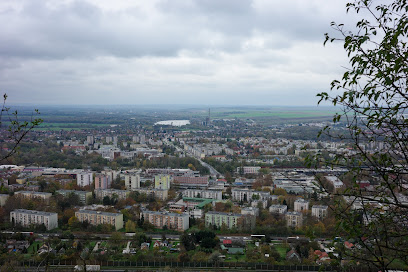
Vitány Castle
Explore the enchanting Vitány Castle in Vértessomlós, a historic fortress surrounded by breathtaking natural scenery.

Prédikálószék
Explore Prédkálószék, a majestic mountain peak in Hungary, offering breathtaking views, serene landscapes, and unforgettable hiking adventures.

Vértesi Landscape Protection Area
Explore the breathtaking Vértesi Landscape Protection Area, a national reserve showcasing Hungary's natural beauty, diverse wildlife, and scenic trails.

Gyapjas néni park
Discover the tranquility of Gyapjas Néni Park in Bicske, where nature meets community in a serene setting perfect for relaxation and play.

Unmissable attractions to see
Henryxcity
Experience the rich cultural heritage and captivating exhibits at Henryxcity, a must-visit museum in Császár for every traveler.

Kamalduli Remeteség Oroszlány-Majk
Explore the serene beauty and historical significance of Kamalduli Remeteség, a Baroque monastery nestled in the heart of Oroszlány.

Bokodi Floating Village
Discover the enchanting Bokodi Floating Village, a serene Hungarian retreat where nature meets unique architecture on tranquil waters.

Korda Filmpark
Explore the magic of cinema at Korda Filmpark in Etyek, Hungary - a unique blend of film sets, exhibitions, and interactive experiences.
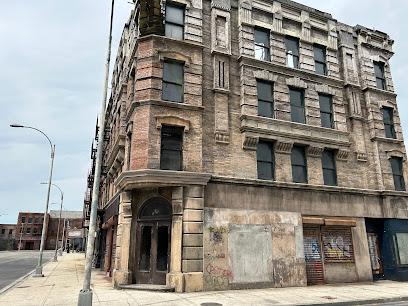
A Földből kitörő metrókocsi
Experience the creativity and cultural significance of A Földből Kitörő Metrókocsi in Csákberény, Hungary's iconic tourist attraction.

Károlyi-kilátó
Discover the stunning vistas at Károlyi-kilátó in Bodajk, Hungary, a hidden gem for nature lovers and photography enthusiasts.

Vitány Castle
Explore Vitány Castle, a stunning fortress in Vértesomlós, where history meets breathtaking landscapes, perfect for your next adventure.

Vértesi Panoráma Tanösvény
Explore the breathtaking Vértesi Panoráma Tanösvény, where stunning landscapes meet serene picnic spots for an unforgettable nature experience.

Földtani Park
Explore the stunning geological formations and picturesque hiking trails of Földtani Park, a natural gem in Gánt, Hungary.

Open-air Museum of Mining and Industry
Discover Hungary's industrial past at the Open-air Museum of Mining and Industry, blending technology, art, and history in an engaging outdoor experience.

Ligeti tó
Explore the tranquil beauty of Ligeti Tó in Tatabánya, Hungary, where nature meets serenity in a picturesque lakeside setting.

Báracháza Barlang
Explore the stunning Báracháza Barlang in Csákvár, Hungary – a breathtaking cave filled with natural wonders and rich biodiversity.
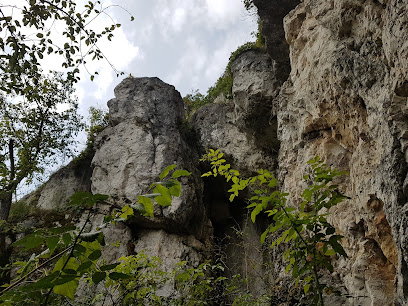
Somló Lookout
Experience the stunning panoramic views of the Hungarian countryside at Somló Lookout, a perfect spot for nature lovers and photographers.
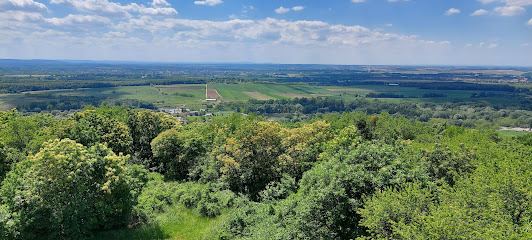
Kőhányás puszta
Explore Kőhányás Puszta, Hungary's breathtaking hiking area, perfect for nature lovers and adventure seekers, offering stunning views and diverse wildlife.

Gróf Merán Fülöp Vadászati és Erdészeti Múzeum
Explore the captivating world of wildlife and forestry at the Gróf Merán Fülöp Museum in Csákberény, Hungary - a hidden gem for nature lovers.

Essential places to dine
Vértes Vendéglő
Experience authentic Hungarian cuisine in a picturesque setting at Vértes Vendéglő - where tradition meets flavor.

Restaurant to the Four Hermits
Discover authentic Hungarian flavors at Restaurant to the Four Hermits in Oroszlány, where every meal tells a story.

Méri Néni Kft.
Experience authentic Hungarian cuisine in the heart of Gánt at Méri Néni Kft., where tradition meets taste in every dish.

Markets, malls and hidden boutiques
Westend
Explore Westend Shopping Mall: Budapest's ultimate shopping destination with diverse stores, dining, and entertainment options in a vibrant atmosphere.

Allee Mall
Discover Allee Mall in Budapest, a vibrant shopping paradise with diverse stores, dining, and entertainment for an unforgettable experience.

Vertes Center Shopping Mall
Discover the vibrant shopping scene at Vertes Center Shopping Mall in Tatabánya, featuring diverse stores, delightful dining, and family-friendly entertainment.

KütyüBazár
Explore KütyüBazár, a one-stop-shop for unique gadgets, games, and gifts, perfect for tourists seeking local treasures.
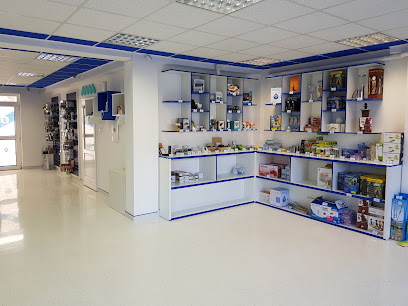
Szputnyik shop D20
Unearth unique gifts, vintage fashion, and artisan jewelry at Szputnyik Shop D20 in the heart of Budapest's District VII.

Retrock Designer Vintage Store
Explore Retrock Designer Vintage Store in Budapest for exclusive vintage clothing and accessories that reflect timeless style and unique fashion sense.

Printa Design Shop
Discover the charm of Budapest at Printa Design Shop, a hub for unique handcrafted gifts, art, and fashion that captures the essence of local culture.

Chinesisch sk áruház
Explore Chinesisch sk áruház in Vértesszőlős for a unique shopping experience featuring clothing, home goods, and more!

spencerpolo.hu
Explore Spencer Polo, a charming gift shop filled with unique local treasures and handcrafted souvenirs that capture the spirit of your travels.

Rododendron Art & Design Shop
Discover unique art, fashion accessories, and handcrafted souvenirs at Rododendron Art & Design Shop, a creative gem in Budapest.

Hopline.hu
Explore Hopline.hu in Pusztavám, your one-stop brewing supply store for all craft beer enthusiasts seeking quality ingredients and expert advice.

Ludovika
Discover unique vintage fashion treasures at Ludovika in Budapest, where each piece tells a story of timeless elegance.

Goods Market
Explore Oroszlány's Goods Market for an authentic taste of local culture, fresh produce, and unique Hungarian delicacies in a vibrant community setting.

Center Trade Naprakész ABC
Discover local flavors and daily essentials at Center Trade Naprakész ABC in Örkény, a perfect stop for travelers seeking convenience and culture.
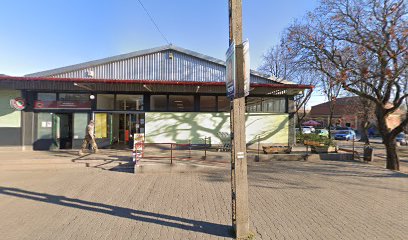
Center Trade 2007 Kft
Explore the unique offerings at Center Trade 2007 Kft, a vibrant store in Hernád where local craftsmanship meets everyday shopping needs.

Essential bars & hidden hideouts
Vértes Vendéglő
Discover the authentic flavors of Hungary at Vértes Vendéglő, where traditional dishes and warm hospitality meet in a charming setting.

Csehó Pub & Étterem
Experience the best of Hungarian cuisine at Csehó Pub & Étterem in Csákvár, offering a diverse menu and a welcoming atmosphere for all.

Nexus Billiards
Experience the vibrant nightlife and pool games at Nexus Billiards in Vértesszőlős, where fun and relaxation meet in a lively atmosphere.

Fekete Gyémánt Söröző
Experience the vibrant atmosphere and local flavors at Fekete Gyémánt Söröző, a lively bar in the heart of Mór, Hungary.

Kóbor-Ló Söröző
Experience the vibrant atmosphere and authentic Hungarian hospitality at Kóbor-Ló Söröző, the perfect bar for relaxation in Tatabánya.

Lesz Vigasz Pub
Discover the vibrant atmosphere of Lesz Vigasz Pub in Söréd, where local flavors and warm hospitality come together for an unforgettable experience.

Hegyalja Büfé
Discover the vibrant atmosphere and friendly service at Hegyalja Büfé, a must-visit bar in Oroszlány offering great drinks at affordable prices.

Miller Pub
Discover the lively Miller Pub in Tatabánya, where friendly service meets a wide selection of drinks in a cozy atmosphere.

Fehér Ökör Rock Pub
Discover the lively atmosphere of Fehér Ökör Rock Pub in Tatabánya, where great music and a welcoming vibe create unforgettable nights.

Enbo's Presszó
Discover the vibrant atmosphere of Enbo's Presszó, a delightful bar in Oroszlány, offering local drinks and a welcoming ambiance for travelers.

Éva Bisztró
Discover the warmth of Hungarian hospitality at Éva Bisztró, a charming pub in Kincsesbánya offering delightful cuisine and a welcoming atmosphere.

Fácánkert Söröző
Discover the heart of Tatabánya at Fácánkert Söröző, a cozy pub offering local flavors, great drinks, and a vibrant atmosphere.

Royal Eszpresszó
Discover the cozy charm of Royal Eszpresszó in Szár, where delightful beverages and a warm atmosphere await travelers seeking a taste of local hospitality.

Barlang Söröző & Street Food Vértesacsa
Discover the flavors of Vértesacsa at Barlang Söröző & Street Food, where fast food meets local culinary delights in a cozy atmosphere.

Pintyőke Söröző
Discover the vibrant atmosphere of Pintyőke Söröző, a beloved bar in Tatabánya, perfect for enjoying drinks and local culture.
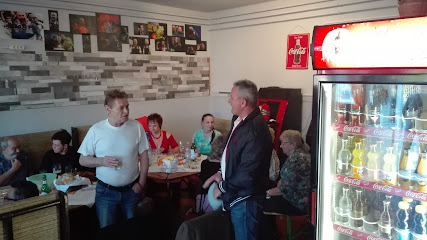
Local Phrases about Vértes Mountains
-
- HelloSzia
[See-ah] - GoodbyeViszlát
[Vee-slaat] - YesIgen
[Ee-gen] - NoNem
[Nem] - Please/You're welcomeKérem
[Kay-rem] - Thank youKöszönöm
[Ker-suh-nuhm] - Excuse me/SorryElnézést
[El-nay-zayst] - How are you?Hogy vagy?
[Hodj vahdj] - Fine. And you?Jól vagyok. És te?
[Yole vahdj-ok. Aysh teh?] - Do you speak English?Beszélsz angolul?
[Beh-saylss on-go-lool] - I don't understandNem értem
[Nem air-tem]
- HelloSzia
-
- I'd like to see the menu, pleaseSzeretnék látni az étlapot, kérem
[Suh-reht-nayk laht-nee oz ate-loh-pot, kay-rem] - I don't eat meatNem eszek húst
[Nem es-ek hoost] - Cheers!Egészségedre!
[Eh-gay-sheh-ged-reh] - I would like to pay, pleaseFizetnék, kérem
[Fee-zet-nayk, kay-rem]
- I'd like to see the menu, pleaseSzeretnék látni az étlapot, kérem
-
- Help!Segítség!
[Sheh-geet-sayg] - Go away!Menj el!
[Meyn el] - Call the Police!Hívj rendőrt!
[Heeve rend-urt] - Call a doctor!Hívj doktort!
[Heeve dok-tort] - I'm lostElvesztem
[El-vehs-tem] - I'm illBeteg vagyok
[Beh-teg vahdj-ok]
- Help!Segítség!
-
- I'd like to buy...Szeretnék vásárolni...
[Suh-reht-nayk vah-shaor-all-nee] - I'm just lookingCsak nézelődöm
[Chak nay-zeh-loh-dohm] - How much is it?Mennyibe kerül?
[Men-nyee-beh keh-rool] - That's too expensiveEz túl drága
[Ez tool draa-gah] - Can you lower the price?Le tudnád engedni az árat?
[Leh too-dnaad eng-ehd-nee oz ah-raht]
- I'd like to buy...Szeretnék vásárolni...
-
- What time is it?Mennyi az idő?
[Men-nyee oz ee-doh] - It's one o'clockEgy óra van
[Edge oh-rah vahn] - Half past (10)Fél tíz
[Fale teez] - MorningReggel
[Re-ggel] - AfternoonDélelőtt
[Deh-leh-loht] - EveningEste
[Es-teh] - YesterdayTegnap
[Teg-nap] - TodayMa
[Mah] - TomorrowHolnap
[Hohl-nap] - 1Egy
[Edge] - 2Kettő
[Ket-toh] - 3Három
[Ha-rom] - 4Négy
[Nayg] - 5Öt
[Oht] - 6Hat
[Haht] - 7Hét
[Hayt] - 8Nyolc
[Nyo-lts] - 9Kilenc
[Kee-lents] - 10Tíz
[Teetz]
- What time is it?Mennyi az idő?
-
- Where's a/the...?Hol van a...
[Hohl vahn ah] - What's the address?Mi a cím?
[Mee ah cheem] - Can you show me (on the map)?(Meg)mutatnád (a térképen)?
[(Meg)-moo-taht-naad (ah tare-kay-pen)] - When's the next (bus)?Mikor jön a következő (busz)?
[Mee-kor yoon ah keh-veht-keh-zoh (boos)] - A ticket (to ....)Egy jegyet (.... felé)
[Edge yeh-geht (feh-leh)]
- Where's a/the...?Hol van a...
History of Vértes Mountains
-
The Vértes Mountains have been inhabited since ancient times, evidenced by archaeological finds that date back to the Neolithic period. Early human settlers were drawn to the area's abundant natural resources and strategic location. Artifacts such as stone tools and pottery fragments offer a glimpse into the lives of these early communities.
-
During the Roman era, the Vértes Mountains served as a natural barrier and strategic outpost for the Roman Empire. The region was part of the province of Pannonia, and remnants of Roman roads and fortifications can still be found. The Romans valued the area's mineral resources and its strategic location along military routes.
-
The Vértes Mountains are dotted with the ruins of medieval castles, such as Csókakő and Vitányvár. These fortresses were built during the Middle Ages to defend against invasions and to control important trade routes. The castles played pivotal roles in various historical conflicts, including battles against the Ottoman Empire.
-
According to local legend, the Vértes Mountains got their name from a dramatic event during a battle between Hungarian and German forces. The Hungarian troops, led by Prince Géza, left behind their armors (vértek in Hungarian) as they retreated through the dense forests. The name 'Vértes' thus commemorates this historic retreat.
-
In the 16th century, the Vértes Mountains fell under Ottoman control after the Battle of Mohács. The region endured significant hardship during this period, including raids and battles. Many castles and fortifications were either destroyed or repurposed by the Ottomans, leaving a lasting impact on the local architecture and culture.
-
In recent decades, the Vértes Mountains have become a focus for conservation efforts. The Vértes Nature Park was established to protect the region's unique flora and fauna, as well as its historical sites. Modern-day visitors can explore well-preserved natural landscapes and historical landmarks, thanks to these ongoing efforts.
Vértes Mountains Essentials
-
The Vértes Mountains are located in central Hungary, roughly between the cities of Székesfehérvár and Tatabánya. The nearest international airport is Budapest Ferenc Liszt International Airport, approximately 70 kilometers away. From Budapest, you can take a train to Székesfehérvár or Tatabánya, and then transfer to a local bus or taxi to reach the Vértes Mountains. The journey typically takes around 1.5 to 2 hours by road.
-
Within the Vértes Mountains, the most practical way to get around is by car or bicycle. Public buses do operate between the main towns and villages, but they can be infrequent. Taxis are available, but it's advisable to book them in advance. Renting a car is a convenient option for exploring the area at your own pace.
-
The official currency in Hungary is the Hungarian Forint (HUF). Credit cards are widely accepted in hotels, restaurants, and larger shops, but it's advisable to carry some cash, especially if you plan to visit smaller villages or rural areas. ATMs are available in the main towns such as Székesfehérvár and Tatabánya.
-
The Vértes Mountains are generally a safe destination for tourists. However, as with any travel destination, it's important to take standard precautions. Avoid walking alone at night in unfamiliar areas and keep an eye on your belongings in crowded places. There are no specific high-crime areas targeting tourists, but it's always best to stay vigilant.
-
In case of emergency, dial 112 for immediate assistance. The local police stations and medical facilities are available in Székesfehérvár and Tatabánya. It is recommended to have travel insurance that covers medical emergencies. For minor health issues, there are pharmacies in the main towns where you can purchase over-the-counter medications.
-
Fashion: Do wear comfortable clothing suitable for hiking and outdoor activities. Avoid wearing overly revealing clothing in small villages. Religion: Do respect local customs and traditions. Public Transport: Do be respectful and give up your seat to elderly passengers. Don’t eat or drink on public transport. Greetings: Do greet people with a handshake. A friendly nod or a hello (szia) is also appreciated. Eating & Drinking: Do try local delicacies and accept food offerings graciously. Don’t refuse hospitality, as it is considered impolite.
-
To experience the Vértes Mountains like a local, visit the local markets where you can buy fresh produce and traditional Hungarian goods. Engage with locals, as they are often friendly and willing to share stories about the area's history and culture. Don't miss visiting the Csókakő Castle and the ruins of Vitányvár Castle for a glimpse into the region’s medieval past. For a unique experience, explore the hiking trails that offer breathtaking views of the landscapes and wildlife.
Nearby Cities to Vértes Mountains
-
Things To Do in Szekesfehervar
-
Things To Do in Veszprem
-
Things To Do in Budapest
-
Things To Do in Gyor
-
Things To Do in Vac
-
Things To Do in Keszthely
-
Things To Do in Kecskemet
-
Things To Do in Trnava
-
Things To Do in Bratislava
-
Things To Do in Zalaegerszeg
-
Things To Do in Szombathely
-
Things To Do in Salgotarjan
-
Things To Do in Sopron
-
Things To Do in Eisenstadt
-
Things To Do in Pecs







